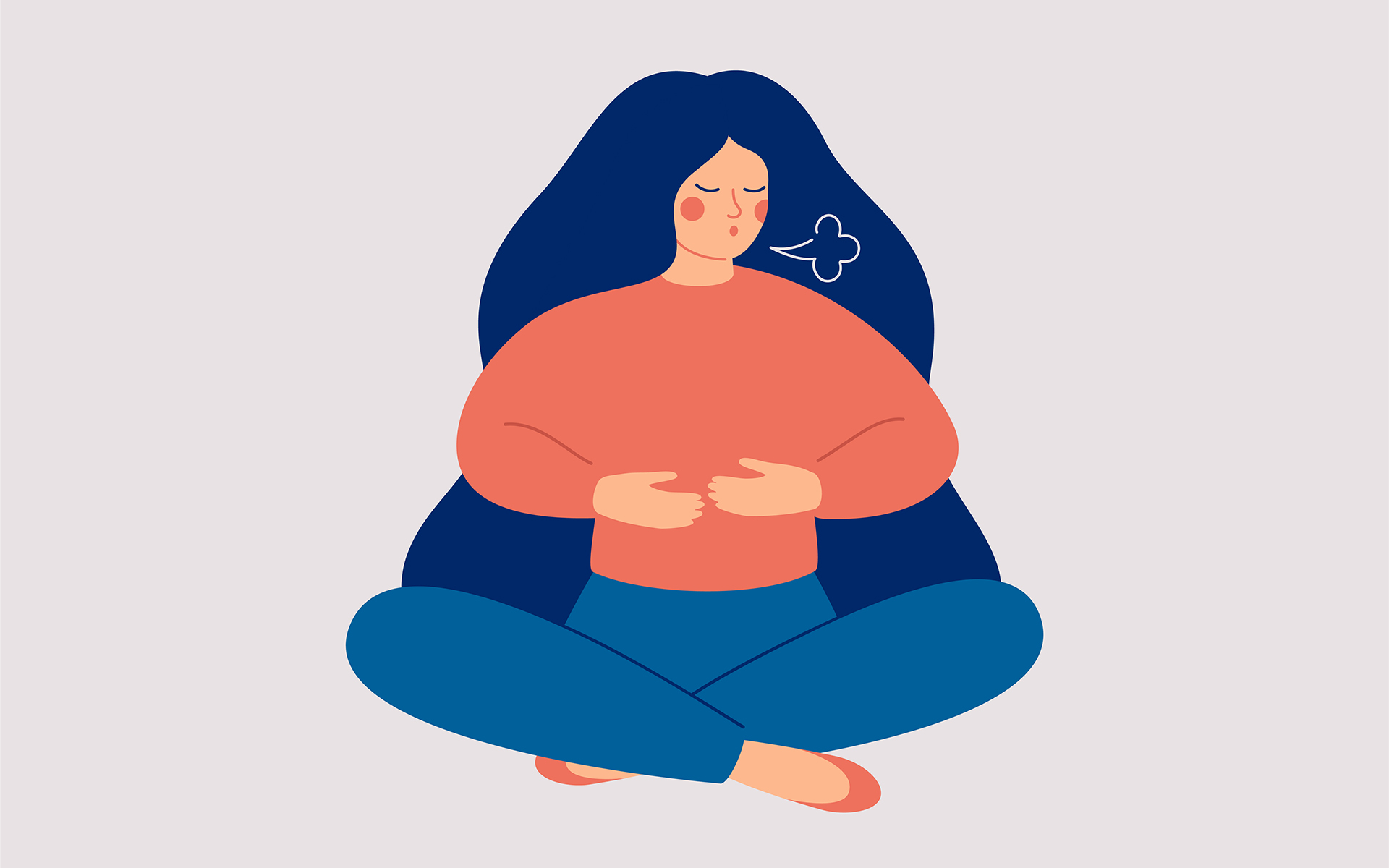Important: Mindful recommends that anyone with depression or mood disorders consult a mental health professional before beginning or changing any course of treatment. Our articles do not constitute professional medical advice for your specific situation.
Summary
- Depression often comes with low mood, fatigue, and a loop of negative, self-critical thoughts.
- It’s not just the low mood that pulls us down—it’s how our mind reacts to it.
- Mindfulness helps us notice thoughts and feelings without getting swept away by them.
- A simple breathing practice, done regularly, can act like a natural antidepressant support—especially when paired with professional care.
Understanding Depression and Why It Returns
Almost everyone is touched by depression at some point—through their own experience or that of someone they love. Millions of people go through periods where:
- Activities that used to feel good lose their spark
- The body feels tired, heavy, or numb
- Emotions feel overwhelming—or strangely distant
- The mind loops on harsh, self-defeating thoughts
The more often we experience episodes like this, the more sensitive we can become to any sign they might be returning. This is one reason relapse is so common.
Falling into a depression can feel traumatic. Just as being bitten by a dog can make us fearful of dogs, going through depression can make us highly sensitive to anything that reminds us of that experience.
So when we feel a low mood or a wave of tiredness, the mind might jump in with:
“Uh oh, this is how I felt when I was depressed. What if it’s happening again?”
From there, negative thoughts may start to pile up:
- “I am a failure.”
- “I am weak.”
- “I am worthless.”
The mind often tries to solve what’s happening: Why is this back? What’s wrong with me? How do I fix this?
Paradoxically, the harder it tries to fix, analyze, or fight the mood, the deeper it can sink into it.
It’s like having a worried problem-solver hovering over you when you’re already not feeling well—not very soothing.
It’s Not the Low Mood—It’s How We Relate to It
Feeling low from time to time is part of being human. The problem isn’t the low mood itself—it’s the way we habitually relate to it.
- We judge it.
- We fear it.
- We fuse with the story: This means I’m broken.
Our minds pour “kerosene on the fire” with rumination—replaying the same thoughts over and over, trying to fix or figure out the mood. This rumination can roll us into a full-blown depressive episode.
Mindfulness offers another way.
How Mindfulness Helps
Mindfulness is the practice of gently bringing attention to the present moment—thoughts, feelings, and sensations—with curiosity and kindness rather than judgment.
Instead of:
- Avoiding what we feel
- Fixing what we feel
- Fighting what we feel
We practice:
- Noticing what is here
- Allowing it to be present
- Softly returning to what we are doing
When sadness shows up, rather than diving into Why am I sad? What does this mean? we can simply recognize:
“Sadness is here.”
If self-judgments arise—“I am weak,” “I am a loser”—we can see them as old patterns linked to past depression, not as absolute truths.
We might say internally:
“This is a familiar thought pattern. I don’t have to believe it right now.”
Then, we gently bring our attention back to what we were doing—our breath, our body, the task at hand. This interrupts the ruminative cycle between thoughts, feelings, and physical sensations that can fuel relapse.
This is a skill. And like any skill, it gets stronger with practice.
A Classic Mindful Breathing Practice (Natural Antidepressant Support)
One simple way to practice mindfulness is to use the breath as your anchor.
You can try it like this:
- Choose a spot for your attention
Sit comfortably. Let your attention rest at the tip of your nose or on your belly. - Notice the in-breath and out-breath
As you breathe in, silently acknowledge: “Breathing in.”
As you breathe out, silently acknowledge: “Breathing out.”
Imagine you’re greeting and saying goodbye to an old friend. - When the mind wanders (because it will), label it
The mind will drift—to worries, plans, memories.
When you notice this, gently label it: “Wandering.”
Then, without judgment, guide your attention back to the breath. - Repeat, kindly, as many times as needed
Most of us repeat this process many, many times in a single practice.
That’s not a mistake—that is the practice.
You can do this for as little as 1 minute or as long as 30 minutes or more—whatever feels supportive and realistic for you.
Practicing When You Feel Well
It’s especially helpful to practice when you’re feeling relatively okay.
When you do this regularly, you begin to:
- Recognize more quickly when the mind drifts into worry and self-judgment
- Notice early signs of rumination
- Gently return to the present, rather than automatically following negative thought spirals
Then, when you’re not feeling well and the mind starts to loop:
“What’s wrong with me? Here we go again…”
You can use the same skill:
- Label it: “Ruminating.”
- Gently bring your attention back—to your breath, to your body, or to whatever you’re doing.
Being more present can also help you choose supportive actions, like:
- Calling a friend
- Stepping outside for fresh air
- Doing something small that brings pleasure or connection
These are all acts of self-care. Over time, they help weaken the grip of rumination and cultivate more patience, compassion, and peace.
Guided Support and Next Steps
Many people find it helpful to practice with guided audio or in-person support, especially at the beginning. A gentle voice can:
- Walk you through the practice step by step
- Remind you to return to the breath
- Help you feel less alone as you learn
You can also practice on your own once you feel more comfortable.
Mindfulness is not a quick fix, and it’s not a replacement for professional treatment when depression is present. But it can be a powerful, natural support—one breath at a time—on your path toward healing.
Gentle Reminder
If you notice:
- Thoughts of self-harm or suicide
- Depression that makes it hard to function day to day
- A sense of hopelessness that feels overwhelming
Please reach out to a mental health professional or a trusted person in your life. You don’t have to navigate this alone. Mindfulness can be one part of a wider circle of care.








